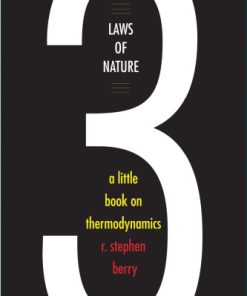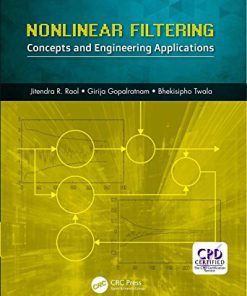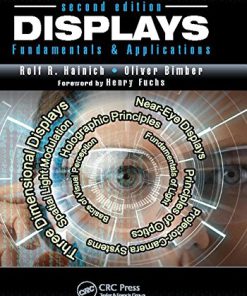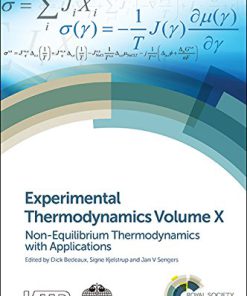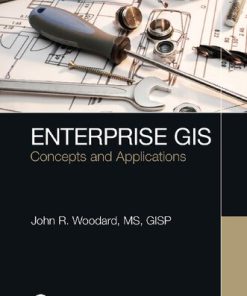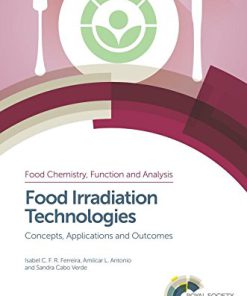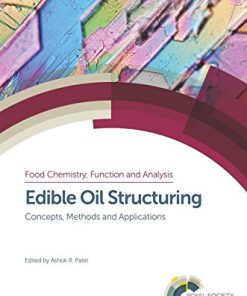Thermodynamics Concepts and Applications 2nd Edition by Stephen Turns, Laura Pauley ISBN 1316846148 9781316846148
$50.00 Original price was: $50.00.$25.00Current price is: $25.00.
Thermodynamics Concepts and Applications 2nd Edition by Stephen R. Turns, Laura L. Pauley – Ebook PDF Instant Download/Delivery:1316846148 , 978-1316846148
Full download Thermodynamics Concepts and Applications 2nd Edition after payment
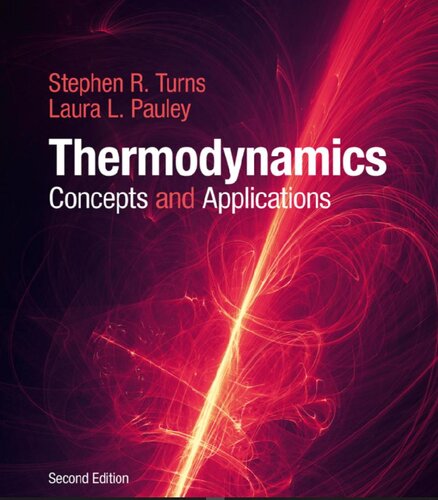
Product details:
ISBN 10: 1316846148
ISBN 13: 978- 1316846148
Author: Stephen R. Turns, Laura L. Pauley
Thermodynamics Concepts and Applications 2nd Table of contents:
Chapter 1: Beginnings
- Learning Objectives
- Chapter 1 Overview
- 1.1 What Is Thermodynamics?
- 1.2 Some Applications
- 1.2a Steam Power Plants
- 1.2b Spark-Ignition Engines
- 1.2c Jet Engines
- 1.3 Learning Thermodynamics
- 1.4 Physical Frameworks for Analysis
- 1.4a Closed Systems
- 1.4b Open Systems (Control Volumes)
- 1.5 Key Concepts and Definitions
- 1.5a Properties
- 1.5b States
- 1.5c Processes
- 1.5d Cycles
- 1.5e Equilibrium and the Quasi-Equilibrium Process
- 1.6 Dimensions and Units
- 1.7 Problem-Solving Method
- 1.8 Mathematical Skills to Review
- Summary
- Chapter 1 Key Concepts and Definitions Checklist
- References
- Chapter 1 Problems
Chapter 2: Thermodynamic Properties, Property Relationships, and Processes
- Learning Objectives
- Chapter 2 Overview
- 2.1 Why Properties Are Important
- 2.2 Key Definitions
- 2.3 Frequently Used Thermodynamic Properties
- 2.3a Properties Related to the Equation of State
- Mass
- Number of Moles
- Volume
- Density
- Specific Volume
- Pressure
- Temperature
- 2.3b Properties Related to the First Law
- Internal Energy
- Enthalpy
- Specific Heats and Specific-Heat Ratio
- 2.3c Properties Related to the Second Law
- 2.3a Properties Related to the Equation of State
- 2.4 Concept of State Relationships
- 2.4a State Principle
- 2.4b P–v–T Equations of State
- 2.4c Calorific Equations of State
- 2.5 Ideal Gases as Pure Substances
- 2.5a Ideal-Gas Definition
- 2.5b Ideal-Gas Equation of State
- 2.5c Processes in P–v–T Space
- 2.5d Ideal-Gas Calorific Equations of State
- 2.6 Nonideal-Gas Properties
- 2.6a State (P–v–T) Relationships
- 2.6b Calorific Relationships
- 2.7 Pure Substances Involving Liquid and Vapor Phases
- 2.7a State (P–v–T) Relationships
- 2.7b Calorific and Second-Law Properties
- 2.8 Liquid Property Approximations
- 2.9 Solids
- Summary
- Chapter 2 Key Concepts and Definitions Checklist
- Chapter 2 Problems
Chapter 3: Conservation of Mass
- Learning Objectives
- Chapter 3 Overview
- 3.1 Generic Balance Principle
- 3.2 Mass Conservation for a Closed System
- 3.3 Flow Rates and Average Velocity
- 3.3a Flow Rates
- 3.3b Average Velocity
- 3.4 Mass Conservation for an Open System (Control Volume)
- 3.4a General View of Mass Conservation for Open Systems
- 3.4b Steady-State, Steady Flow
- 3.4c Unsteady Flows
- Summary
- Chapter 3 Key Concepts and Definitions Checklist
- Chapter 3 Problems
- Appendix 3A: Spark-Ignition Engine Geometry
Chapter 4: Energy and Energy Transfer
- Learning Objectives
- Chapter 4 Overview
- 4.1 Closed and Open System Energy
- 4.1a Energy Associated with a System
- 4.1b Energy at a Microscopic Level
- 4.2 Energy Transfer across Boundaries
- 4.2a Heat
- 4.2b Work
- Expansion Work
- Shaft Work
- Electrical Work
- Flow Work
- 4.3 Sign Conventions and Units
- 4.4 Rate Laws for Heat Transfer
- 4.4a Conduction
- 4.4b Convection
- 4.4c Radiation
- 4.1 Closed and Open System Energy
- Summary
- Chapter 4 Key Concepts and Definitions Checklist
- Chapter 4 Problems
Chapter 5: First Law of Thermodynamics
- Learning Objectives
- Chapter 5 Overview
- 5.1 Energy Conservation for a Closed System
- 5.2 Energy Conservation for Open Systems
- 5.2a Steady Flow
- 5.2b Unsteady Flow
- 5.3 Applications of the First Law to Open Systems
- Summary
- Chapter 5 Key Concepts and Definitions Checklist
- Chapter 5 Problems
Chapter 6: Second Law of Thermodynamics and Some of Its Consequences
- Learning Objectives
- Chapter 6 Overview
- 6.1 Usefulness of the Second Law
- 6.2 One Fundamental Statement of the Second Law
- 6.2a Reservoirs
- 6.2b Heat Engines
- 6.2c Thermal Efficiency and Coefficients of Performance
- 6.2d Reversibility
- 6.3 Consequences of the Kelvin-Planck Statement
- 6.3a Kelvin’s Absolute Temperature Scale
- 6.3b The Carnot Efficiency
- 6.4 Alternative Statements of the Second Law
- Summary
- Chapter 6 Key Concepts and Definitions Checklist
- Chapter 6 Problems
Chapter 7: Entropy and Availability
- Learning Objectives
- Chapter 7 Overview
- 7.1 Entropy
- 7.1a Definition
- 7.1b Isothermal Heat Transfer
- 7.1c Derivation of Entropy as a Property
- 7.1d Specific Entropy
- 7.2 Ideal-Gas Properties and Processes
- 7.3 Specific Entropy for Pure Nonideal Substances
- 7.4 Entropy Balances for a Closed System
- 7.5 Entropy Balances for Open Systems
- 7.6 Availability (Exergy)
- 7.1 Entropy
- Summary
- Chapter 7 Key Concepts and Definitions Checklist
- Chapter 7 Problems
- Appendix 7A: Molecular Interpretation of Entropy
Chapter 8: Thermal-Fluid Analysis of Steady-Flow Devices
- Learning Objectives
- Chapter 8 Overview
- 8.1 Steady-Flow Devices
- 8.2 Nozzles and Diffusers
- 8.3 Throttles
- 8.4 Pumps, Compressors, and Fans
- 8.5 Turbines
- 8.6 Heat Exchangers
- Summary
- Chapter 8 Key Concepts and Definitions Checklist
- Chapter 8 Problems
Chapter 9: Systems for Power Production, Propulsion, Heating, and Cooling
- Learning Objectives
- Chapter 9 Overview
- 9.1 Steam Power Plants
- 9.2 Gas-Turbine Engines
- 9.3 Modified Power Cycles
- 9.4 Turbojet Engines
- 9.5 Other Gas Power Cycles
- 9.6 Refrigerators and Heat Pumps
- Summary
- Chapter 9 Key Concepts and Definitions Checklist
- Chapter 9 Problems
- Appendix 9A: Turbojet Engine Analysis Revisited
Chapter 10: Ideal-Gas Mixtures
- Learning Objectives
- Chapter 10 Overview
- 10.1 Ideal-Gas Mixtures
- 10.2 Specifying Mixture Composition
- 10.3 State (P–v–T) Relationships for Mixtures
- 10.4 Calorific Relationships for Mixtures
- 10.5 Second-Law Relationships for Mixtures
- 10.6 Gibbs Free Energy
- Summary
- Chapter 10 Problems
Chapter 11: Air–Vapor Mixtures
- Learning Objectives
- Chapter 11 Overview
- 11.1 Air Conditioning, Humidification, and Related Systems
- 11.2 Physical Systems
- 11.3 General Analysis
- 11.4 Some New Concepts and Definitions
- 11.5 Recast Conservation Equations
- 11.6 Humidity Measurement
- Summary
- Chapter 11 Key Concepts and Definitions Checklist
- Chapter 11 Problems
Chapter 12: Reacting Systems
- Learning Objectives
- Chapter 12 Overview
- 12.1 Mass Conservation for Reacting Systems
- 12.2 Energy Conservation for Reacting Systems
- 12.3 Combustion Chemistry
- 12.4 Performance of Combustion Systems
- 12.5 Direct and Indirect Heat Integration
- 12.6 Selection of Fuel
- Summary
- Chapter 12 Key Concepts and Definitions Checklist
- Chapter 12 Problems
People also search for Thermodynamics Concepts and Applications 2nd :
photonics and thermodynamics concepts in radiative cooling
sr turns thermodynamics concepts and applications
thermodynamics concepts and applications pdf
law of thermodynamics concepts
first law of thermodynamics concepts
Tags:
Stephen Turns, Laura Pauley,Thermodynamics,Concepts,Applications 2nd
You may also like…
Physics Physics - Mechanics
Computers - Programming
Enterprise GIS: Concepts and Applications 1st Edition John R. Woodard
Technique - Food Manufacturing
Food irradiation technologies concepts applications and outcomes 1st Edition Isabel C F R Ferreira
Science (General)
Edible Oil Structuring Concepts Methods and Applications Ashok 1788012224 9781788012225



